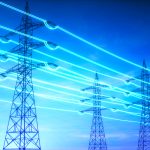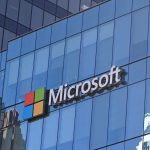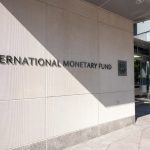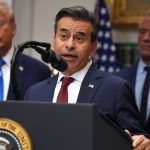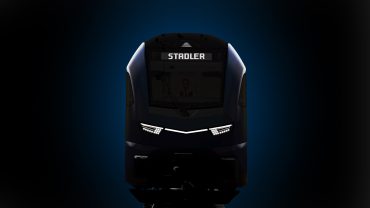
Stadler Wins $127 Million California Contract for Hydrogen Trains
6 minute read

California hydrogen trains accelerate zero-emission rail expansion as Stadler doubles US manufacturing capacity for sustainable transport
Three Key Facts
- $127 million California contract – Stadler secures orders for 10 hydrogen trains from California’s Department of Transportation, part of a framework agreement for up to 29 units through 2027.
- $70 million facility expansion – The company doubles its Salt Lake City manufacturing plant to accelerate zero-emission train production for the US market through 2031.
- 1,741-mile world record – Stadler’s FLIRT H2 train sets Guinness World Record for longest distance traveled without refueling, demonstrating hydrogen technology viability.
Introduction
Stadler positions itself at the forefront of sustainable rail transportation with the deployment of its Zero Emission Multiple Unit (ZEMU) and RS ZERO hydrogen trains. The Swiss manufacturer combines hydrogen fuel cells with battery technology to create hybrid propulsion systems that eliminate greenhouse gas emissions while maintaining operational efficiency on non-electrified rail lines.
The company’s breakthrough comes as rail operators seek cost-effective alternatives to full electrification, which requires substantial capital investment. California’s electrification of just 51 miles of Caltrain track cost $2.7 billion, highlighting the economic advantage of hydrogen and battery trains that operate on existing infrastructure.
Key Developments
Stadler officially unveiled its ZEMU train on June 21, 2024, at San Bernardino Depot Train Station in partnership with the San Bernardino County Transportation Authority. The train currently undergoes final testing phases before entering service on the Arrow line and Metrolink system later in 2024.
The company introduced its RS ZERO model at Rail Business Days 2025 in Ostrava, Czech Republic, marking the train’s Central European premiere. This follows Germany as the second country to showcase the hydrogen-powered regional train, which succeeds Stadler’s diesel-powered RegioShuttle RS1.
California’s Department of Transportation placed a $127 million order for six additional hydrogen passenger trains earlier this year, complementing four previously ordered units. The framework agreement allows for up to 29 hydrogen trains total, with all units expected to be operational by 2027.
Market Impact
Stadler reports delivering 299 zero-emission vehicles, including 271 battery-electric FLIRT Akku units and 28 hydrogen-powered FLIRT H₂ trains. The company has secured contracts for 18 hydrogen trains with Italian operators ARST and FdC, funded through the EU’s National Recovery and Resilience Plan.
The manufacturer’s investment in US operations reflects growing market demand for sustainable rail solutions. The $70 million Salt Lake City facility expansion doubles production capacity and supports workforce development through 2031, backed by local government incentives.
Czech Republic presents a strategic opportunity for hydrogen trains, with only 35% of its rail network electrified and aging diesel locomotives requiring replacement. Stadler Praha has expanded from 30 to over 250 engineers since 2009, supporting regional design and integration efforts.
Strategic Insights
Hydrogen and battery trains offer operational flexibility that pure electric systems cannot match on non-electrified routes. Stadler’s modular power pack design allows operators to transition gradually from diesel without requiring extensive infrastructure investment.
The RS ZERO’s ability to use industrial-grade hydrogen with 95% purity reduces fuel costs and enhances operational flexibility compared to systems requiring higher-purity hydrogen. This technical advantage broadens the potential customer base for operators managing cost-sensitive regional routes.
Stadler targets niche markets where traditional electrification proves economically unfeasible, including narrow-gauge applications in Italy and regional routes with lower passenger demand. This strategy positions the company to capture market share in segments overlooked by larger competitors focused on high-traffic corridors.
Expert Opinions and Data
Ray Marquez, SBCTA President, describes the ZEMU’s arrival as “a significant milestone recognizing years of strategic planning for a greener rail system and a commitment to innovative transportation solutions in San Bernardino County.”
Peter Spuhler, Chairman of Stadler’s Board of Directors, emphasizes that “decarbonisation is crucial and that Stadler aims to win tenders globally, regardless of market size.” This reflects the company’s commitment to competing across diverse market segments rather than focusing solely on large-scale projects.
Ansgar Brockmeyer, Executive Vice President Sales & Marketing, notes that the RS ZERO maintains “a familiar look and feel while providing emission-free operation.” The train preserves design elements from its diesel predecessor, including distinctive trapezoidal windows, to ease operator and passenger transition.
The FuelCellsWorks report highlights that Stadler’s green hydrogen approach provides sustainable alternatives to diesel locomotives while delivering efficient energy management through hybrid technology.
Conclusion
Stadler’s hydrogen train program demonstrates the commercial viability of zero-emission rail technology through proven performance metrics and growing contract wins. The company’s dual approach of battery-electric and hydrogen-hybrid systems addresses diverse operational requirements across different market segments.
The combination of record-setting endurance, expanding production capacity, and strategic partnerships positions Stadler to capitalize on the global transition toward sustainable transportation. Industry confidence in hydrogen rail technology strengthens as operators recognize the operational benefits of quiet running, zero emissions, and reduced maintenance requirements compared to diesel alternatives.

